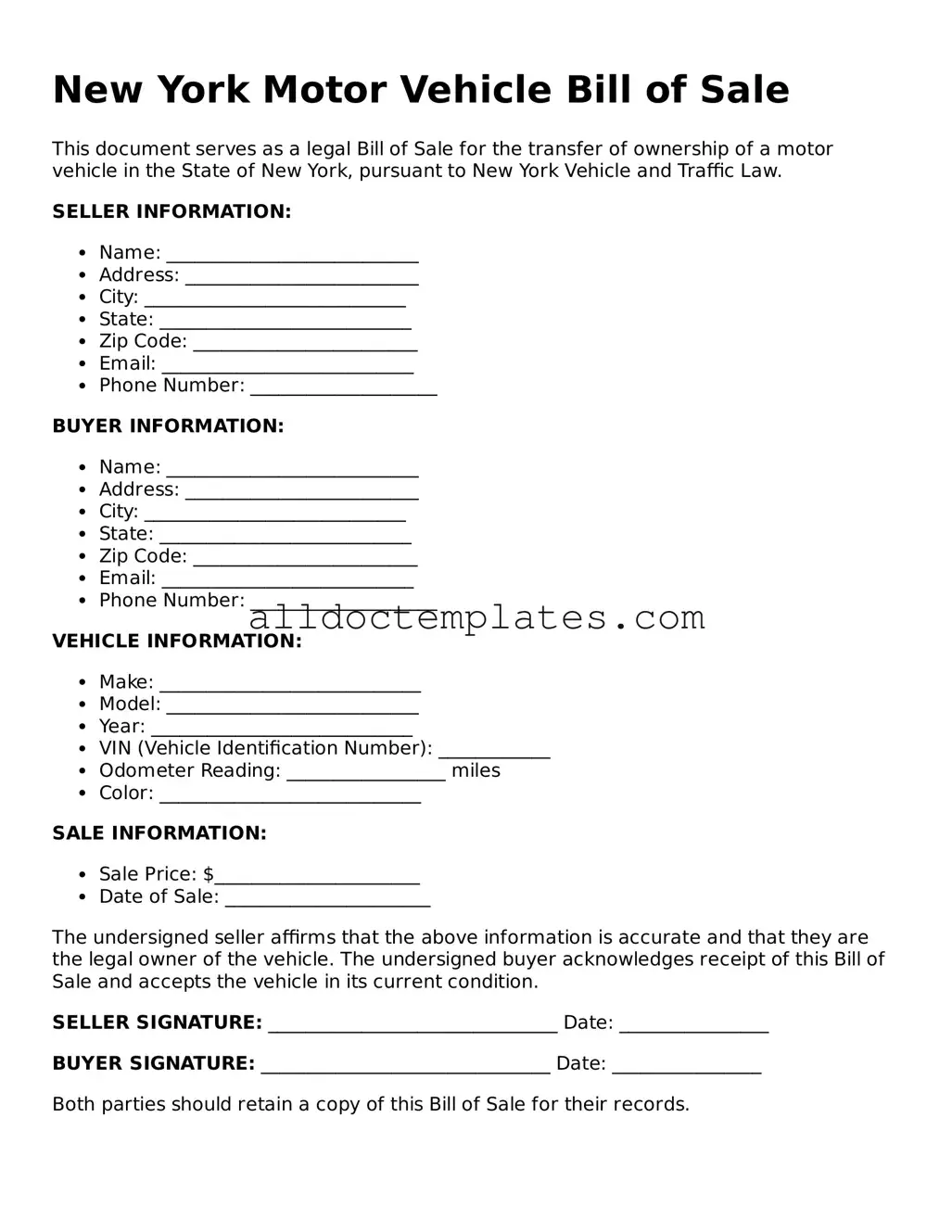New York Motor Vehicle Bill of Sale
This document serves as a legal Bill of Sale for the transfer of ownership of a motor vehicle in the State of New York, pursuant to New York Vehicle and Traffic Law.
SELLER INFORMATION:
- Name: ___________________________
- Address: _________________________
- City: ____________________________
- State: ___________________________
- Zip Code: ________________________
- Email: ___________________________
- Phone Number: ____________________
BUYER INFORMATION:
- Name: ___________________________
- Address: _________________________
- City: ____________________________
- State: ___________________________
- Zip Code: ________________________
- Email: ___________________________
- Phone Number: ____________________
VEHICLE INFORMATION:
- Make: ____________________________
- Model: ___________________________
- Year: ____________________________
- VIN (Vehicle Identification Number): ____________
- Odometer Reading: _________________ miles
- Color: ____________________________
SALE INFORMATION:
- Sale Price: $______________________
- Date of Sale: ______________________
The undersigned seller affirms that the above information is accurate and that they are the legal owner of the vehicle. The undersigned buyer acknowledges receipt of this Bill of Sale and accepts the vehicle in its current condition.
SELLER SIGNATURE: _______________________________ Date: ________________
BUYER SIGNATURE: _______________________________ Date: ________________
Both parties should retain a copy of this Bill of Sale for their records.
